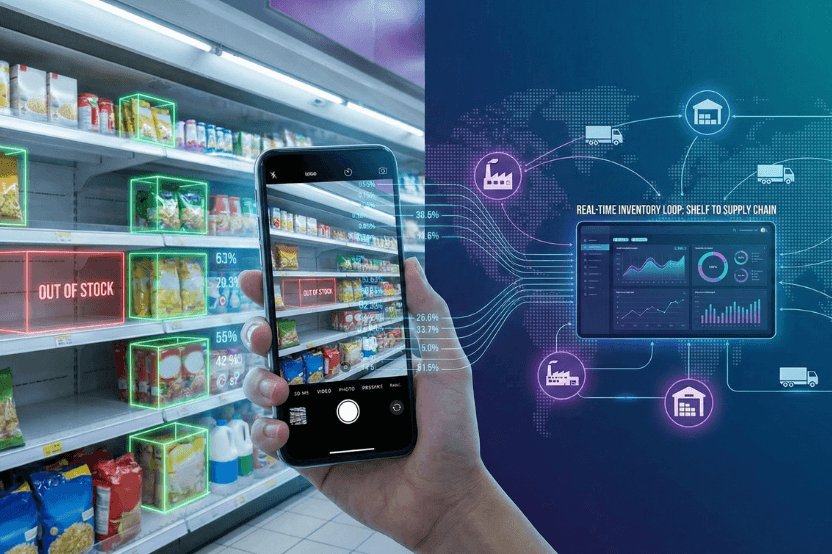The image recognition technology that is transforming the automation world

Synthetic Computer Vision (SCV) is a groundbreaking approach to image recognition. It is a form of Computer Vision.
Computer Vision is a type of software that enables computers to derive meaningful information from digital images, videos, and other visual inputs.
In traditional Computer Vision, the most widely used version of the technology, an algorithm is trained to detect real world objects using hundreds and thousands of real images of those objects. Sourcing and preparing this high-quality training data is extremely costly and time-consuming. Therefore, the process it is not feasible to adapt and scale traditional Computer Vision to the demands of the masses. It is therefore unrealistic for most companies to consider its use for domain-specific applications.
Synthetic Computer Vision is not burdened by this unnecessary barrier to adoption i.e. access to the necessary training data. This is because Synthetic Computer Vision does not rely on real data to train its algorithms. Instead, Synthetic Computer Vision is powered by Synthetic Data, a virtual recreation of the real world data that is used to train Computer Vision models to detect real world objects.

For real world object detection, Synthetic Data encompasses rendered images and videos of a 3D, digital twin of a real world object including virtual scenes that it is placed in. This data represents the attributes of the object as well as possible environments in which it may be found in real life. It is used to train Computer Vision models to detect that real world object.
Using Synthetic Data in this way, to train Computer Vision models, is the essence of Synthetic Computer Vision. Its use is leading to the widespread adoption, accessibility, and scalability of CV technology in ways that traditional CV with real data never could.
SCV simplifies the input stage of image recognition. Instead of manually collecting and labelling thousands of individual data points for one object, you create a computer generated object and scenery that you can generate vast amounts of images with to train a CV model.
Synthetic Computer Vision provides multi-modal metadata (2D/3D bounding boxes, depth data, masks, etc.) at virtually zero cost. With SCV, bounding boxes are created programmatically from the get go vs the long learning curve associated with traditional Computer Vision. SCV is extremely robust as it eliminates the human annotation errors that are typical with conventional CV methods.
It is also extremely flexible as it captures real data variation with an easy to manipulate digital, 3D object as the training data.
Synthetic Data not only benefits the initial stages of a CV workflow, it streamlines the entire CV process.
Synthetic Computer Vision excels where conventional solutions are limited in many ways:
- Adaptability: The virtual nature of Synthetic Data makes it easy to transfer datasets and models between domains and CV use cases.
- Speed: A real-world deployment can be implemented in less than one week, saving you a ton of time and radically cutting costs.
- Scale: Easy access to image recognition datasets for over 100,000 SKUs through Neurolabs’ ZIA product.
- Quality: Achieve 95% accuracy for SKU-level product recognition from day one.
For retailers and Consumer Packaged Goods (CPG) brands, Synthetic Computer Vision enables the automation of visual-based processes such as Shelf Monitoring or Shelf Auditing in real-world retail environments using virtual versions of Fast Moving Consumer Goods (FMCG).
The most innovative supermarkets are already reaping the rewards of Synthetic Computer Vision by using ZIA (Zero Image Annotations) by Neurolabs to optimise On-Shelf Availability and put an end to Out-Of-Stocks for good.

At Neurolabs, we are revolutionising in-store retail performance with our advanced image recognition technology, ZIA. Our cutting-edge technology enables retailers, field marketing agencies and CPG brands to optimise store execution, enhance the customer experience, and boost revenue as we build the most comprehensive 3D asset library for product recognition in the CPG industry.




